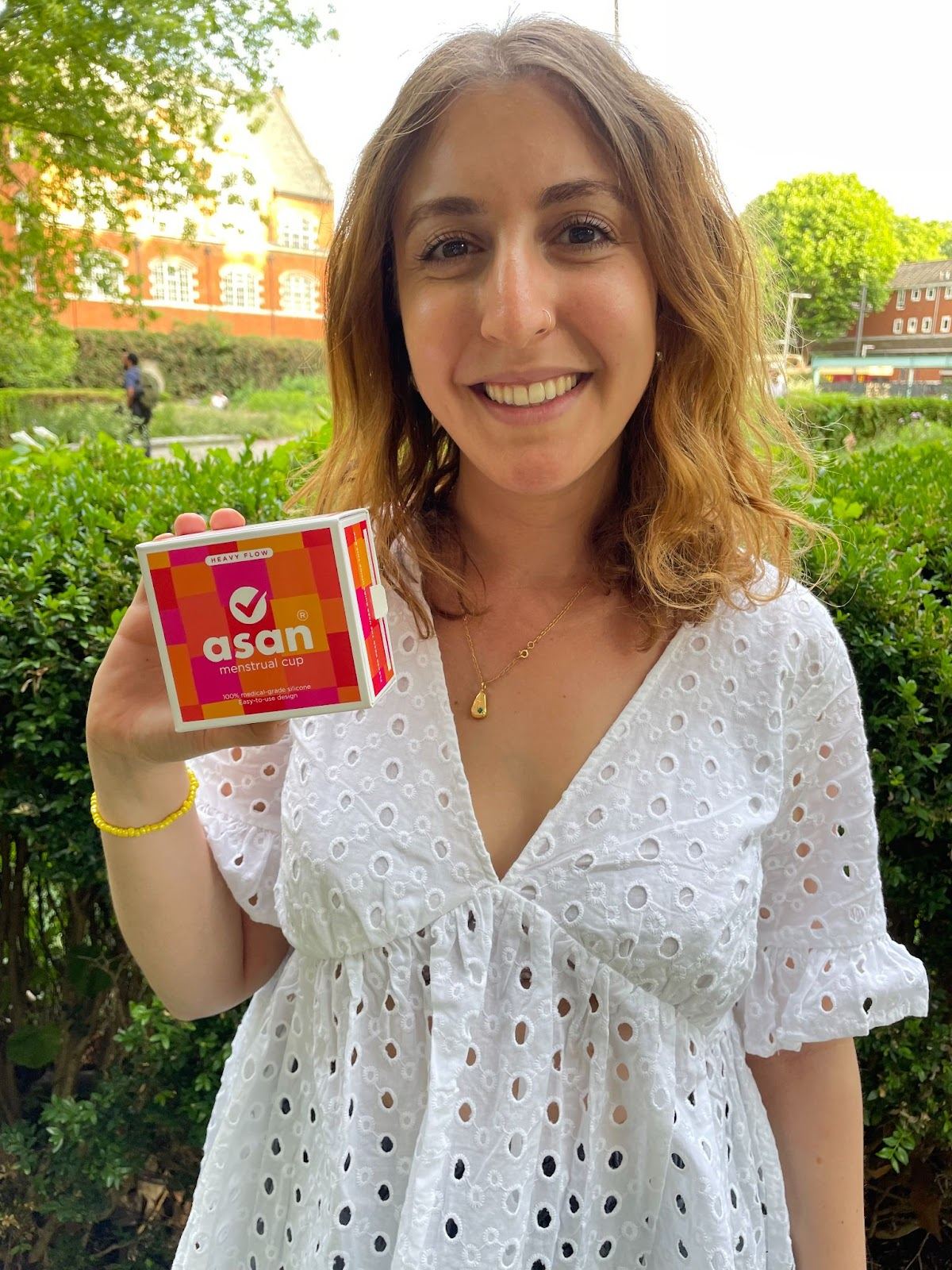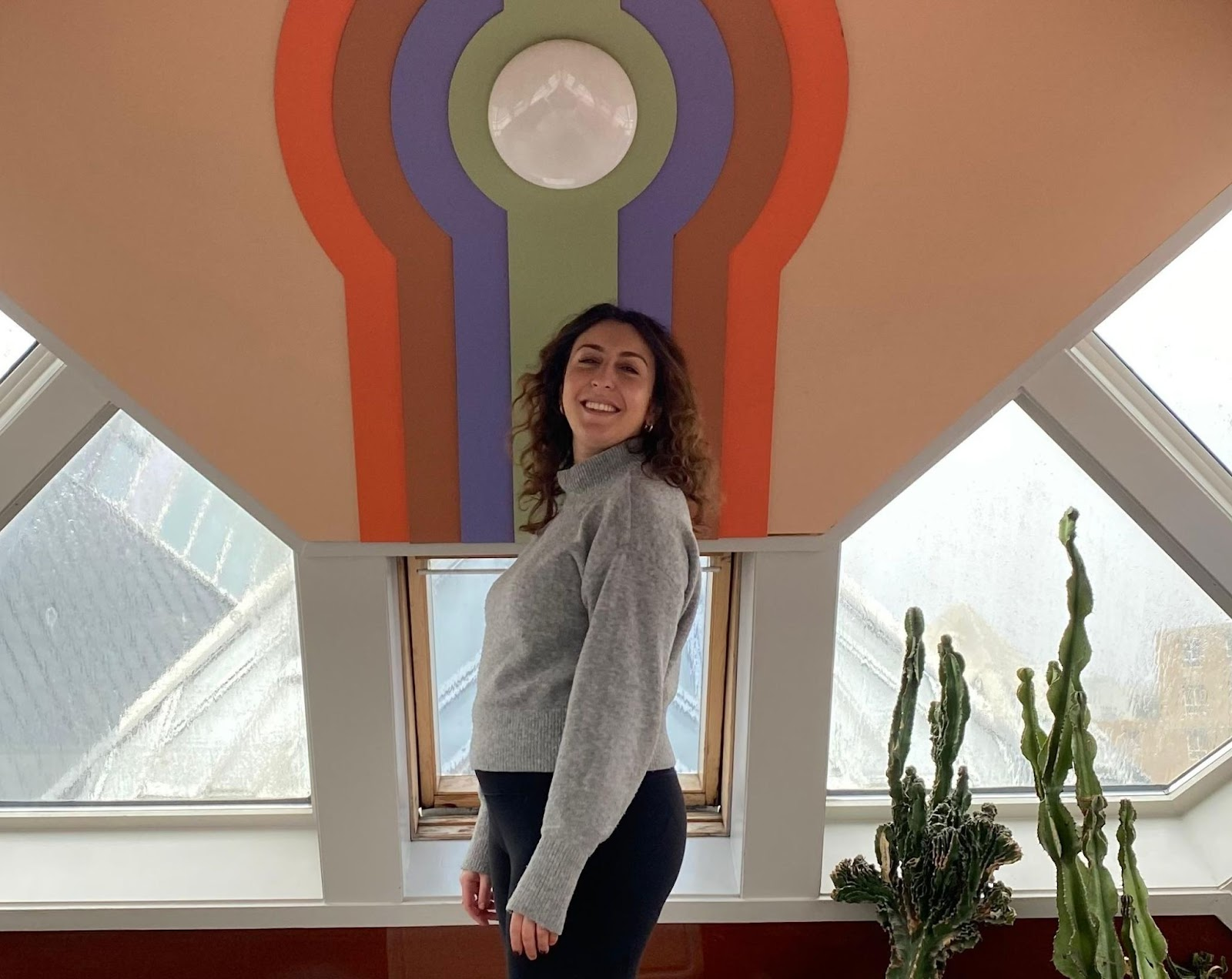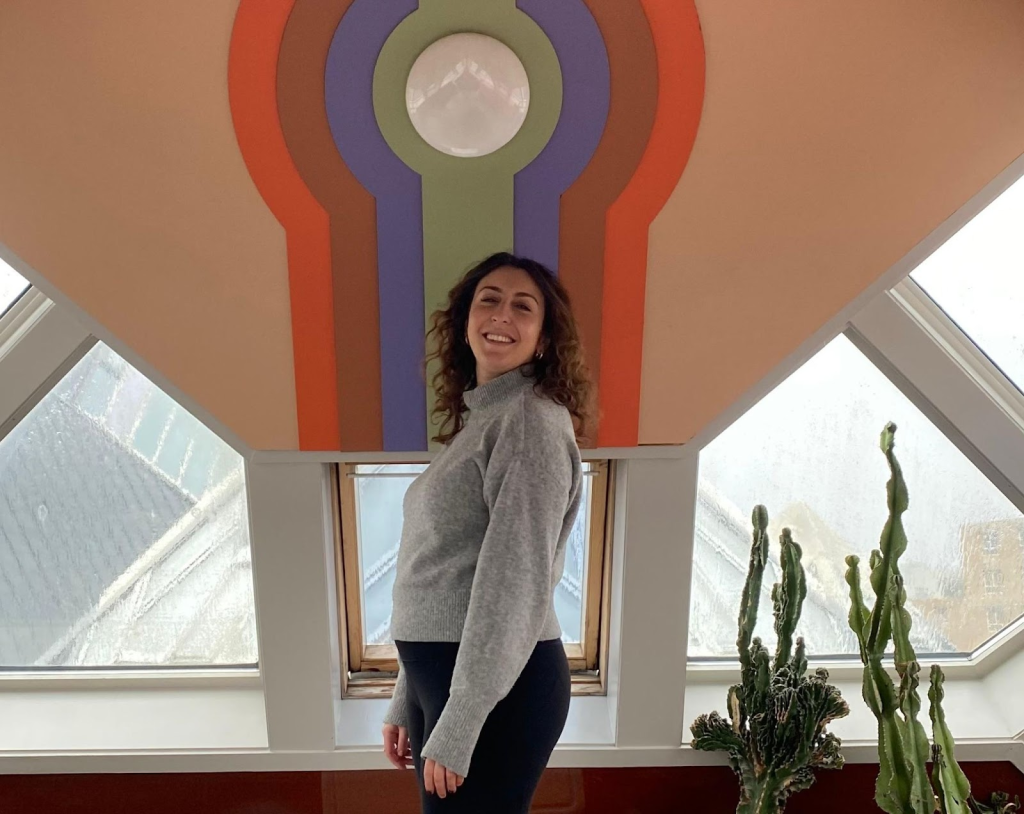-
Mikaela’s first experience with a period cup put her off for 2 years
-
A design feature on the Asan Cup encouraged Mikaela to give period cups another go
-
Research shows that 70% of women would continue using menstrual cups once they are familiar with how to use it

Mikaela, holding an Asan Cup
Mikaela’s first experience with period cups was as bad as they come – she struggled to insert it and found it even more difficult to take out.
In the UK, most women and people who menstruate use sanitary towels or tampons to manage their periods, in fact, only about 4% choose period cups as their preferred menstrual hygiene product. For most of her life, Mikaela, a 31-year-old Londoner, was firmly in the disposable product camp albeit reluctantly.
“I used to find being on my period really inconvenient and uncomfortable using pads and tampons. It would sometimes stop me from doing exercise and I felt uncomfortable swimming when on my period.”

Mikaela, 31
“I had a few friends who used menstrual cups and they told me about the benefits,” Mikaela recalled. “I liked that it was an eco-friendly option and it took away the need to continually replenish my supplies of period products.”
Encouraged by their enthusiasm, Mikaela decided to give it a try. She purchased her first cup and headed home to test it out. What followed, however, was far from the smooth experience she had hoped for.
“The cup was very firm. Initially, I thought that would be best for a leak-free fit but it made it very difficult to fold and it took me a while to figure out the best way to insert it.”
After much effort, she finally managed to insert the cup and tried to go about her day. But the discomfort was immediate and persistent—she could feel the cup with every movement. Hours later, when it was time to remove it, things went from bad to worse.
“I thought inserting it was hard but taking it out was even more of a struggle. The stem at the end of the cup was really hard to grip. It felt like I was in the bathroom forever and I kept trying not to panic when the cup wouldn’t budge.”
“Eventually, I was able to remove the cup, but I found the whole experience so stressful. That’s when I swore off period cups forever.”
The incident left Mikaela with a disklike for period cups and she avoided it for two years and returned to disposable products.
“I always kept an eye out for other ways to manage my period because I knew I didn’t love using disposable products,” she explained. “One day, I discovered the Asan Cup and I immediately noticed the ring at the bottom of the period cup. Unlike the first cup I used, the removal ring made it so much easier to use and the material was more pliable but still leakproof.”
Since discovering the Asan Cup, Mikaela has continued using it and raves about the effect it has on her life. “I barely notice when I’m on my period now, it doesn’t impact my life as much and I can continue as normal, especially when it comes to exercise.”
Mikaela’s switch to period cups is supported by research from The London School of Hygiene and Tropical Medicine which shows that 70% of women wanted to continue using menstrual cups once they were familiar with how to use them.



